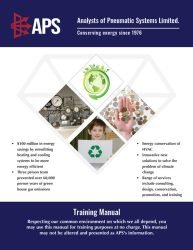Simple Ways to Save Energy with Humidity Control
Controlling humidity isn’t just about comfort—it also helps reduce the spread of viruses and bacteria. While most standard humidifiers use a lot of energy, cold-water spray systems can actually help save on heating costs.
The Misunderstanding About Safety
Many buildings have replaced cold-water spray humidifiers with steam humidifiers because of concerns about Legionnaires’ disease. However, according to the CDC, this isn’t actually a risk—the bacteria can’t grow in cold water below 68°F (20°C). These systems are safe since humidification is only needed in cold weather when water and air temperatures are well below this threshold.
The Problem with Traditional Setups
Most cold-water spray systems were installed in a way that forced the building’s heating system to compensate for the cooling effect of water evaporation. This happened because the temperature sensors were placed in the wrong location.
A Simple Fix with Big Results
With just a few hours of work and minimal materials, we made a small control change at the Etobicoke Board of Education building:
- Captured heat from the exhaust air
- Maintained a comfortable supply of air temperatures
- Reduced gas consumption by over 50%
What Went Wrong
Unfortunately, a humidifier salesperson later convinced the staff to switch to steam humidification. This not only eliminated the energy savings but also increased electricity use. When the building’s heating bills shot back up, we implemented a more complex solution that ultimately reduced gas consumption by 60% compared to the original setup.
Key Points About Cold-Water Humidification Systems
- Low indoor humidity promotes virus and bacterial growth, increasing infections and discomfort (ASHRAE*)
- Cold-water humidity spray systems have been unnecessarily abandoned due to misconceptions about Legionnaires’ Disease risk (contradicted by CDC data)
- Traditional installations placed temperature sensors in the wrong location, missing energy-saving opportunities
- Relocating sensing points for mixing dampers from upstream to downstream of humidity sprays enables significant energy reclamation (52.6% reduction at Etobicoke Board of Education)
- Proper sequencing of control operations is essential for system efficiency
- Regular maintenance of all humidifiers remains critical for performance and safety
- Automatic draining based on water temperature and regular flushing should be implemented for optimal operation
*Note: American society of Heating, Refrigerating, and Air-Conditioning Professionals

